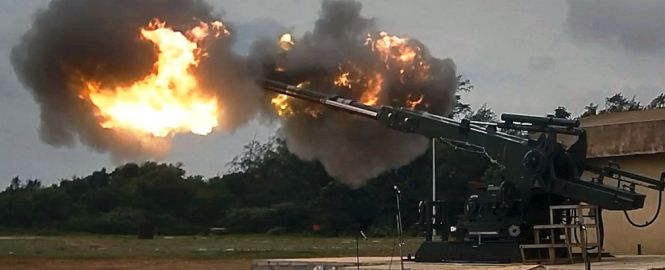- Joined
- May 26, 2010
- Messages
- 31,122
- Likes
- 41,041

Credit : @Shaitan
=================================
View attachment 8993
ERA Mk-I was developed for protection of tanks against shaped charge warheads as per users requirement. However, with enhanced penetration capability of KE projectiles, there is a requirement to provide additional protection from KE projectile in addition to shaped charges. Accordingly, the development of ERA Mk-II was undertaken by DRDO in 2011 with HEMRL as nodal lab and CVRDE, DMRL and PXE as project partners. HEMRL has developed the reactive elements, DMRL carried out development of armour materials for panels and CVRDE has finalised the layout and fitment of panels on tank T-72 and Arjun Mk-II. PXE provided the experimental facilities for dynamic evaluation of ERA.Mk-II panels against 125 mm FSAPDS ammunition. The user trials of the ERA Mk-II were carried out in 4 phases during November 2015 to January 2016. DRDO has developed ERA Mk-II for adaptation on T-72 tanks, having equivalent performance as that of ERA on T-90 tanks (imported from Russia). ERA Mk-II has an integral type configuration on hull glacis, in which the panels have been welded to tank surface with a provision for positioning of reactive elements, using a window (Fig. 5). This type of arrangement has significantly reduced the time for uparming the tank. The size of panels is larger than ERA Mk-I and the reactive elements inside the panel are separated by metallic barriers to avoid sympathetic detonation (Fig. 6).
The user trials were carried out in four phases during November 2015 to January 2016. During the trials, ERA Mk-II was evaluated against 84 mm heat, 125 mm heat, Milan warhead and AMK-339 ammunition.In all the trials, performance of ERA Mk-II was observed within the acceptance criteria as per the quick response (QR).One tank T-72 was fitted with ERA Mk-II panels (Fig. 8) and evaluated by Army for various performance parameters, like mobility, turret traverse, gun stabilisation, etc. as per trial directives. All the requirements were met during the user evaluation. The enhanced protection has been achieved keeping the weight same as that of ERA Mk-I.
View attachment 8994







